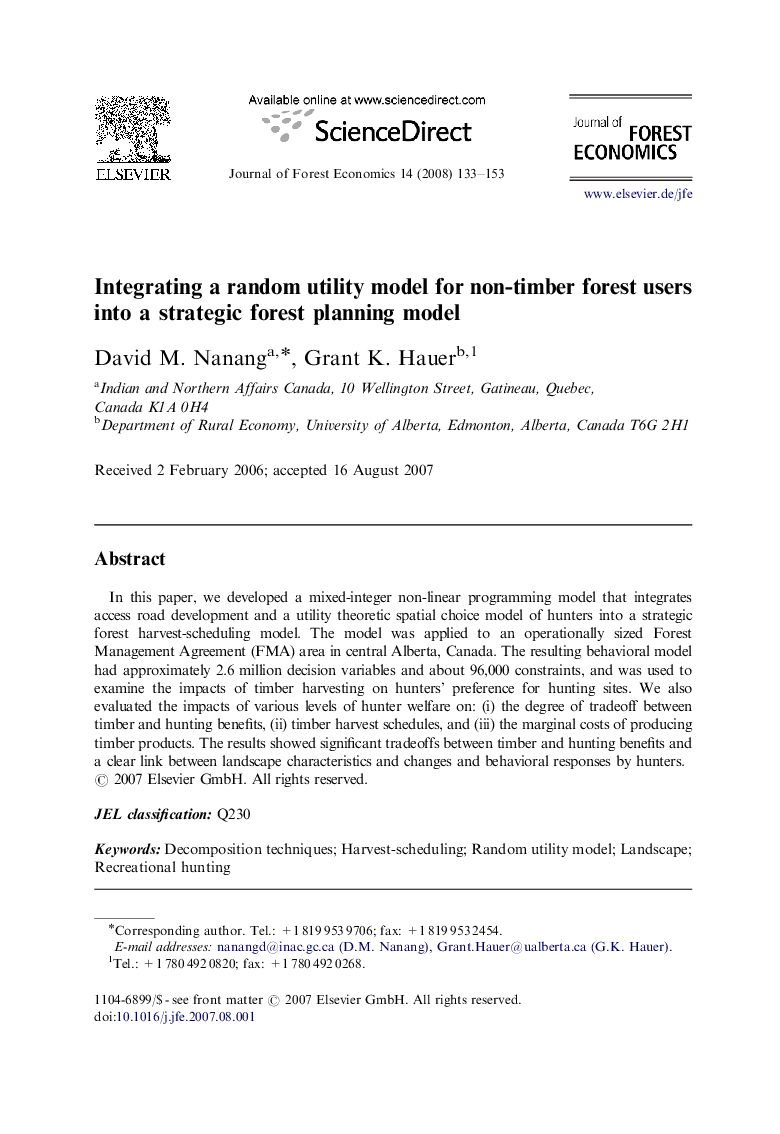| Article ID | Journal | Published Year | Pages | File Type |
|---|---|---|---|---|
| 92051 | Journal of Forest Economics | 2008 | 21 Pages |
In this paper, we developed a mixed-integer non-linear programming model that integrates access road development and a utility theoretic spatial choice model of hunters into a strategic forest harvest-scheduling model. The model was applied to an operationally sized Forest Management Agreement (FMA) area in central Alberta, Canada. The resulting behavioral model had approximately 2.6 million decision variables and about 96,000 constraints, and was used to examine the impacts of timber harvesting on hunters’ preference for hunting sites. We also evaluated the impacts of various levels of hunter welfare on: (i) the degree of tradeoff between timber and hunting benefits, (ii) timber harvest schedules, and (iii) the marginal costs of producing timber products. The results showed significant tradeoffs between timber and hunting benefits and a clear link between landscape characteristics and changes and behavioral responses by hunters.
